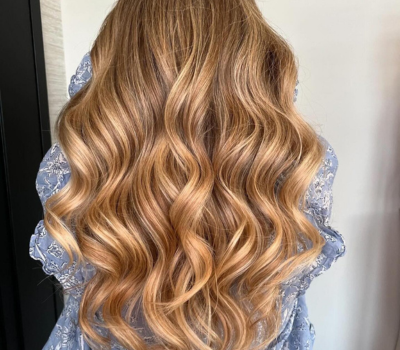Bleaching at home may seem like a simple task for those planning to change their look quickly and economically. However, it presents many risks, especially when carried out by amateurs. Understanding the implications of this manual beauty process is crucial to avoiding mistakes that can lead to irreversible hair damage or aesthetic disappointment.
Raising awareness of the risks of discoloration in the home
The Importance of Understanding the Discoloration Process
Lack of Understanding: The First Cause of Mistakes
- Bleaching involves the removal of natural or artificial pigments from hair, a process often misunderstood by the uninitiated.
- Lack of knowledge on the subject can lead to common mistakes, such as using products not suited to your hair type.
Risks associated with incorrect product application
- Incorrect application of discoloration products can lead to uneven distribution, producing jerky or non-uniform color results.
- Leaving the product on for too long or not long enough can also damage hair health and produce results far from those expected.
The Possible Consequences of Inexperience
Hair and Scalp Damage
- Bleaching products can be harsh on hair, especially when used incorrectly, resulting in brittle, lifeless hair.
- Scalps can also suffer chemical burns if not sufficiently protected.
Unannounced results and aesthetic dissatisfaction
- It's not uncommon to get undesirable tones such as yellow or orange highlights from poorly performed bleaching.
- These mistakes can lead to major aesthetic disappointments and to damaged hair being hidden under hairstyles or accessories for a long period of hair recovery.

The main mistakes to avoid when decorating the home
Extreme Color Changes
Drastic color transitions can cause damage
- It's often tempting to go from a very dark to a very light shade in a single session. However, this practice can severely damage hair structure.
- Overly radical color transitions increase the risk of split ends and weaken the hair fiber, making hair more vulnerable to breakage.
Understanding the Stages of the Discoloration Process
- Bleaching should be seen as a gradual process, where optimal results often require several steps to protect hair health.
- By choosing to go gradually, we minimize chemical aggression and preserve hair quality by limiting exposure to concentrated bleaching agents.
Inappropriate use of Decolorizing Products
The importance of following product instructions
- Manufacturers of bleaching products provide invaluable instructions which must be scrupulously followed to ensure safe and effective treatment.
- Ignoring these instructions can lead to consequential errors, such as incorrect pause times, which dramatically influence the final result.
The Dangers of Overusing or Improperly Mixing Products
- The temptation to use more product than necessary, or to make impromptu mixtures, can compromise hair health and alter results.
- Incorrect dosing or over-application of product increases the risk of chemical burns, breakage and uneven discoloration.
See also: Nutritional deficiencies responsible for hair loss
How to Avoid Decorating Mistakes at Home
Correct Product Selection and Use
Choosing the Right Product for Your Hair Type
- It's important to select a bleaching product formulated for your specific hair type, whether fine, thick, curly or straight. Each hair type reacts differently to bleaching agents.
- Doing a strand test beforehand can give you a preliminary idea of your hair's reaction to the product, which is essential to minimize the risk of damage.
Respect the Recommended Laying Time
- Be sure to strictly adhere to the application time indicated on the product packaging. Failure to do so can either alter the result or damage your hair.
- Time the process and start checking your hair a few minutes before the exposure time is up to avoid any potential over-treatment.
Appropriate Techniques for Successful Decoloration
Apply the product evenly
- Uniform application of the bleach is crucial for even color. Use a specific coloring brush for even distribution.
- Start with the ends and gradually work your way up to the roots, which generally need less time to lighten due to the scalp's natural heat.
Protect Your Scalp
- Before starting the bleaching process, apply a protective cream or oil to the contours of your scalp to reduce irritation and prevent chemical burns.
- Avoid excessive rubbing of the scalp during pre-shampooing to minimize skin irritation during bleaching.
Beware of After-Color
Use Nourishing Hair Care products
- After bleaching your hair, it's crucial to incorporate moisturizing and repairing hair products to maintain the integrity of the hair fiber.
- Opt for hair masks rich in proteins and essential oils that help restore damaged hair and prevent future breakage.
Avoid heating appliances
- Heated appliances such as straightening irons or high-temperature dryers can aggravate damage to recently bleached hair, so limit their use.
- If heaters are used, always apply a high-quality thermal protector to reduce the risk of further damage.
Minimizing errors through proper preparation
Proper planning and preparation
- Plan your bleaching at a time when you're not in a hurry, giving yourself enough time to follow each step carefully and serenely.
- Have all the necessary tools (gloves, combs, towels, etc.) ready before you start, to avoid searching for items during the process.
Essential precautions before home bleaching
Hair Condition Assessment
Hair Health Check
- Before proceeding with bleaching, it's vital to assess the current condition of your hair. Hair already damaged by heat or previous chemical treatments is more susceptible to further damage during bleaching.
- Consult a professional if you have any doubts about your hair's ability to withstand the bleaching process, especially if your hair is already colored.
Performing a Sensitivity Test
- A skin sensitivity test is recommended to ensure that you are not allergic to the chemicals used in bleaching agents.
- Apply a small amount of the product to an inconspicuous area of your skin and wait 24 to 48 hours to observe any adverse reaction.
Environment and tool preparation
Creating a Safe Environment
- Make sure the area where you're going to apply the bleach is well ventilated to avoid inhaling potentially irritating fumes emitted by the chemicals.
- Wear protective plastic or latex gloves to avoid direct contact between the product and your skin.
Using the right tools
- Invest in suitable equipment, such as a non-metallic mixing bowl and an application brush for even product distribution.
- Always have extra towels on hand to wipe up any accidental spills that could stain surrounding surfaces.
Post-Color Advice
Taking Care of Bleached Hair
- After bleaching, use a range of shampoos and conditioners specially designed for color-treated hair to prolong color life and limit damage.
- Alternate between moisturizers and proteins to provide balanced repair to the hair structure.
Fading frequency regulation
- Avoid the temptation to bleach your hair too frequently to prevent excessive stress on the hair fiber.
- Spacing out bleaching sessions allows hair to repair itself naturally and reduces the risk of breakage in the long term.
FAQ
1. How many times a year can I bleach my hair?
It is advisable to limit bleaching to two or three times a year to minimize damage to the hair.
2. What should I do if my hair turns yellow or orange after bleaching?
Use a purple shampoo to neutralize unwanted yellow or orange tones.
3. Can I bleach already-colored hair?
Yes, but it's best to consult a professional, as bleaching on dyed hair can be more complicated and damage the hair.
4. Will a bleaching product completely bleach my hair?
Most bleaching products lighten hair by several shades, but don't necessarily turn it completely white.
5. Can I use a hair mask immediately after bleaching?
Yes, it's even recommended for immediate hydration and nutrition after chemical stress.




